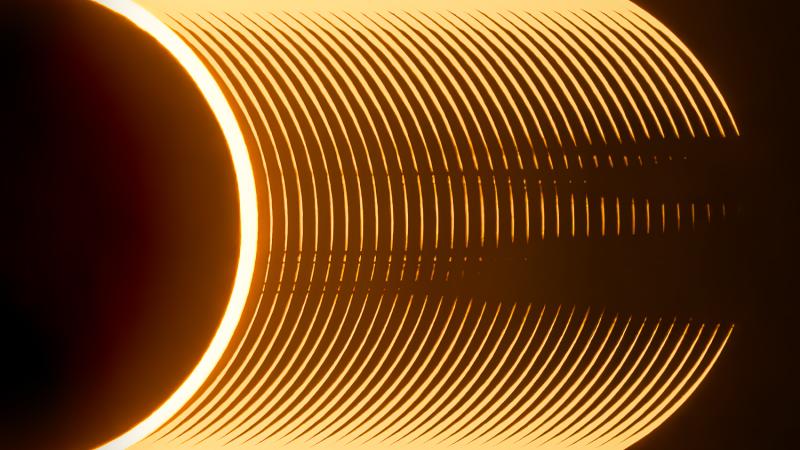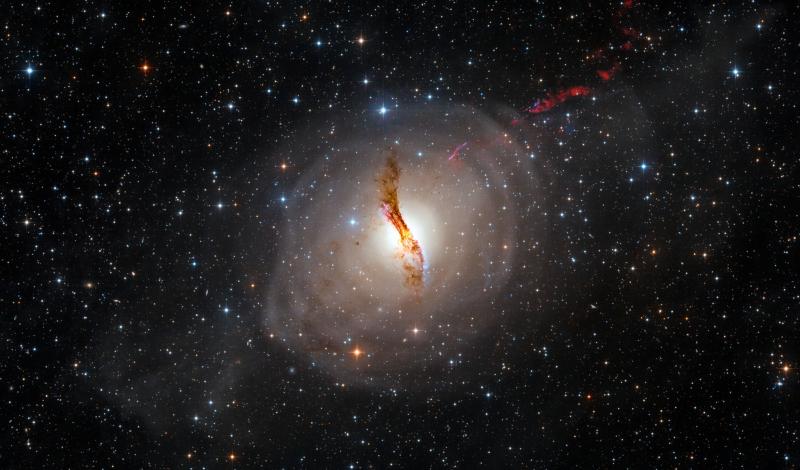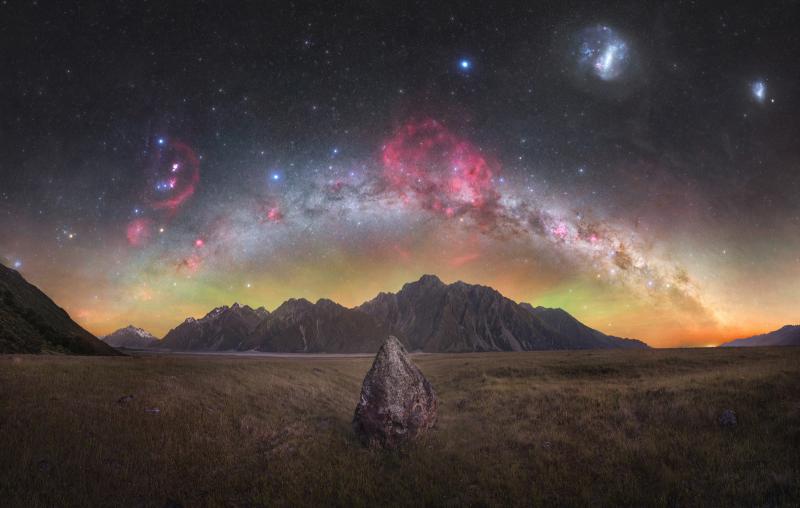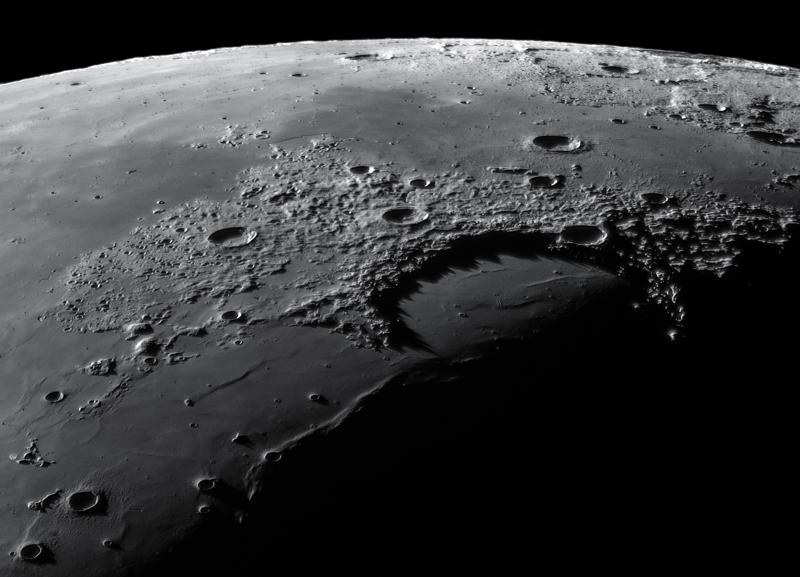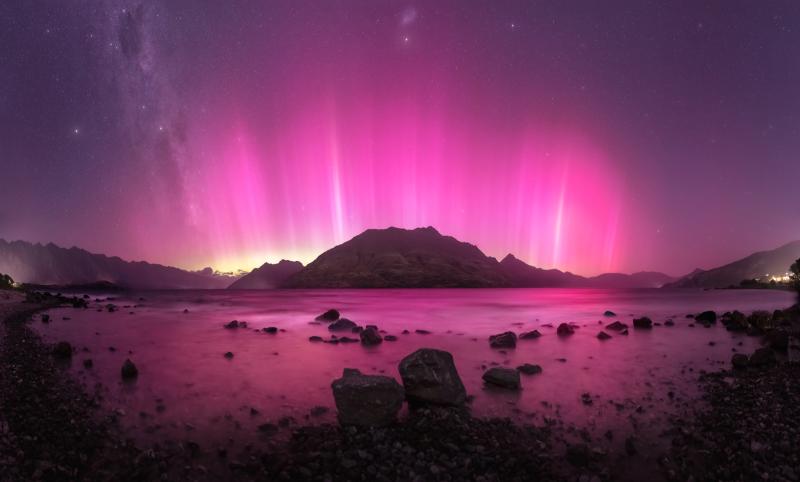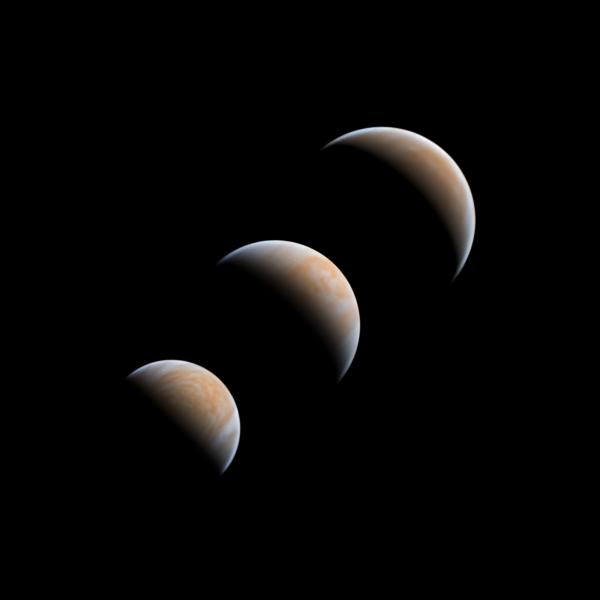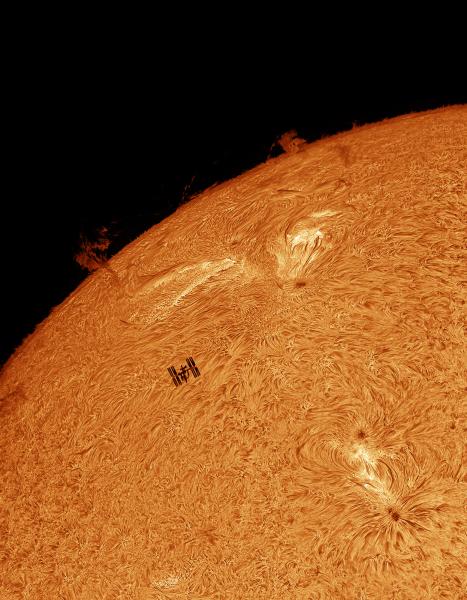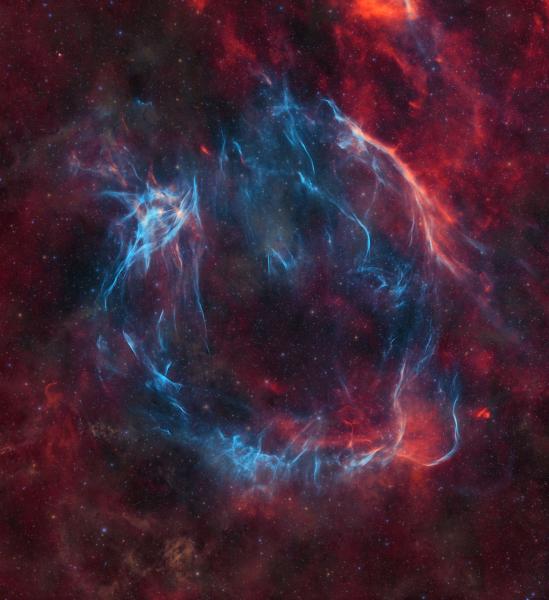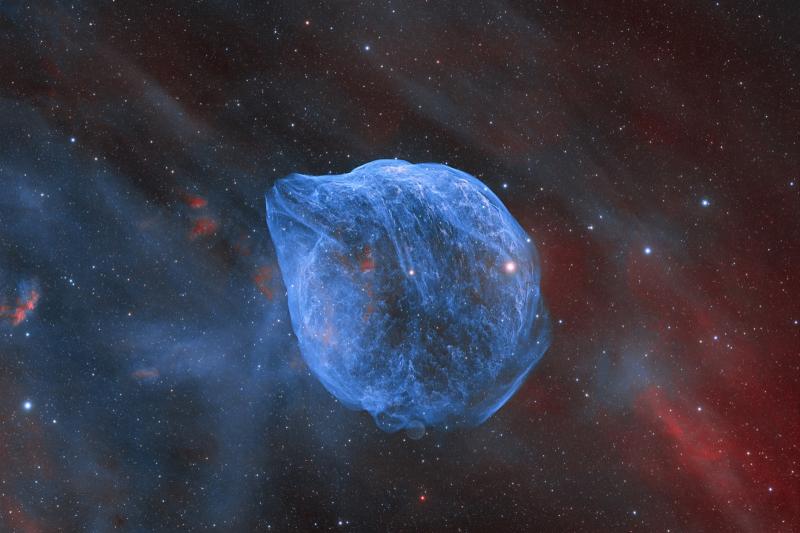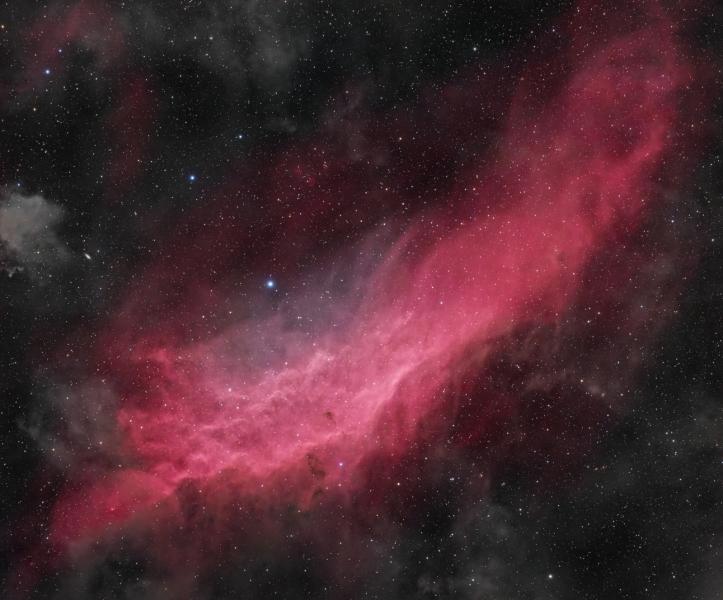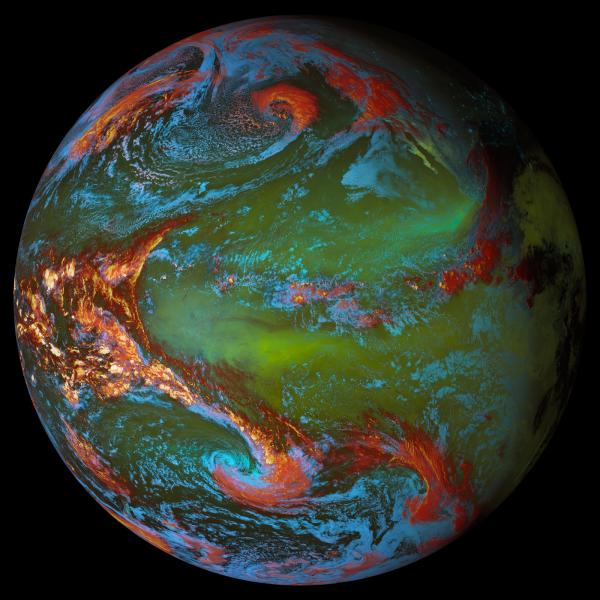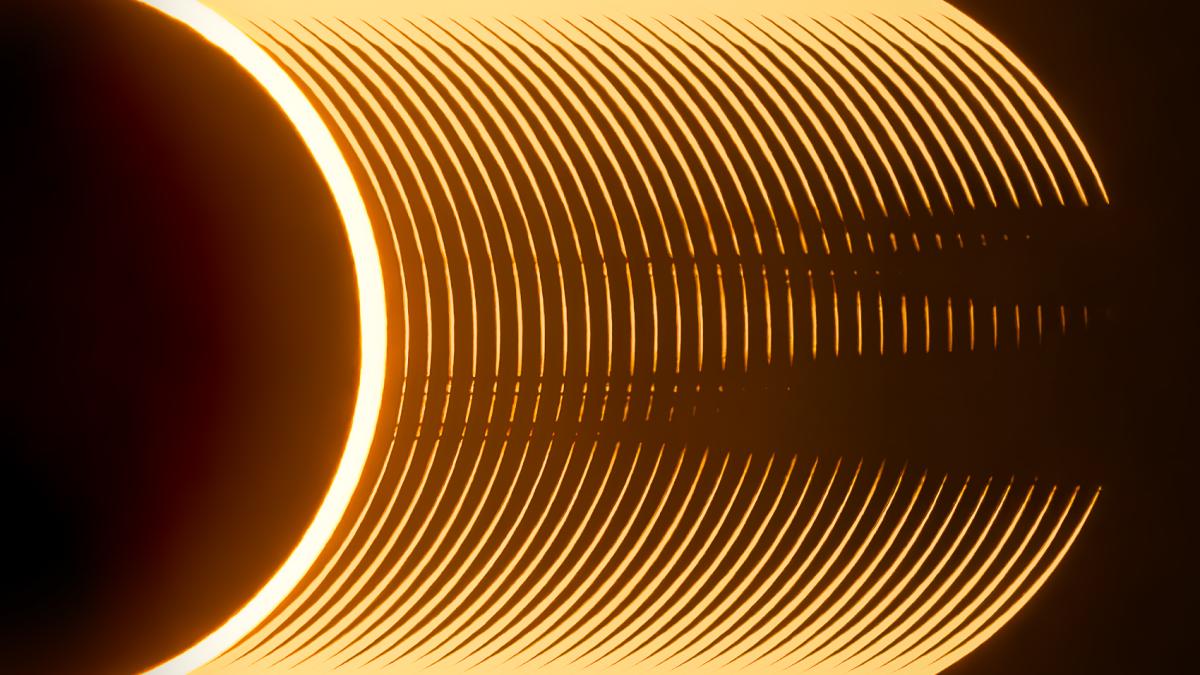
Overall winner and category winner
Distorted Shadows of the Moon's Surface Created by an Annular Eclipse by Ryan Imperio
"This is a sequence of continuously captured images showing the progression of Baily’s beads at third contact [the moment when the Moon’s west edge reveals the Sun’s disc] during the 2023 annular eclipse," explains Ryan.
"Baily’s beads are formed when sunlight shines through the valleys and craters of the Moon’s surface, breaking the eclipse’s well-known ring pattern, and are only visible when the Moon either enters or exits an eclipse. These are a challenge to capture due to their brevity and the precise timing needed.
"With timing being everything, I was lucky to capture the transition of beads as they formed and disappeared during the end of annularity (third contact)," he continues. "For this image, I decided a cropped version was best, allowing the viewer to appreciate the distorted lunar peaks and valleys."
Taken in Odessa, Texas, USA, 14 October 2023
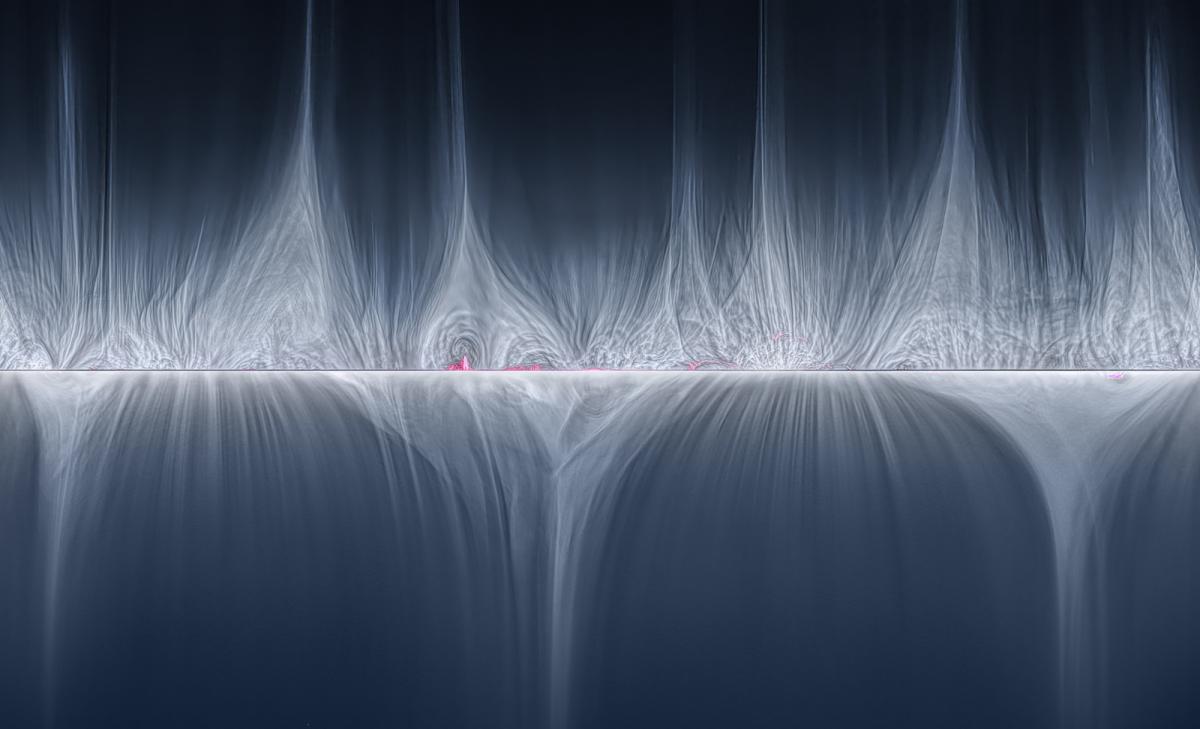
Runner-up
Coronal Chronograph by Peter Ward
"Viewed during a total solar eclipse, the solar corona has a remarkably different appearance during solar maximum compared to that seen at solar minimum," photographer Peter says. "Suffice to say, several years had to pass before the second dataset capture, and travel to extremely remote locations in different continents and hemispheres was required.
"The lower half of the picture was taken in 2017 at close to solar minimum. Sparse and gentle coronal tendrils extend into space. The upper half was taken approaching solar maximum, six years later. The corona is ablaze, joined by fiery eruptions from the chromosphere.
"Trying to convey the contrasting aspects of the solar corona over the intervening period was a challenge. Many attempts using image pairs, different colours and combinations proved fruitless. Unwrapping the normally circular coronal images into a rectangular format which could be ‘mirrored’ revealed a surprising, simple and elegant way of seeing these changes over time within a single image."
Taken in Exmouth, Western Australia, 21 August 2017 and 20 April 2023
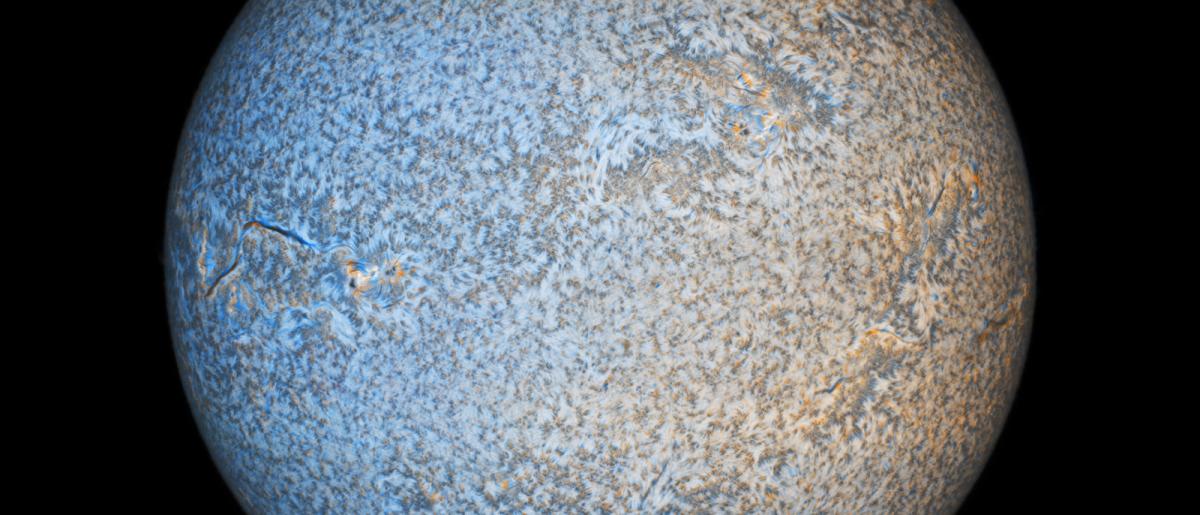
Highly commended
Blue Turns to Red, Our Sun Rotates by Andras Papp
Photographer Andra explains the challenging technical setup used to capture this dynamic view of the Sun's surface. "The narrowband solar observation technique was invented around 1900. At that time, spectroheliographs were used for this purpose. The core of this telescope type is a slit spectrograph, which was also used for raw data acquisition. Here, the spectrograph was a 3D printed unit connected directly to my telescope, supported with a modern image-processing background," Andras says.
"Thanks to the sensitivity of this setup, deformations of the H-alpha line are measurable as a definite sign of a Doppler-Fizeau effect [the change in the frequency of waves as the source and observer move towards (or away from) each other]. Whether the mass of the solar surface is about to eject towards us (blue-shifted) or falling back (red-shifted) can be analysed with this setup.
"It is also possible to observe the rotation of the Sun itself. The east side of the limb is approaching, while the west side is moving away from the observer, which generates the same shift of the H-alpha spectrum. These tiny disorientations were mapped during processing and shown on the picture with bluish and reddish colour tones.
Taken in Veszprémvarsány, Györ-Moson-Sopron, Hungary, 7 September 2023
See the full shortlist
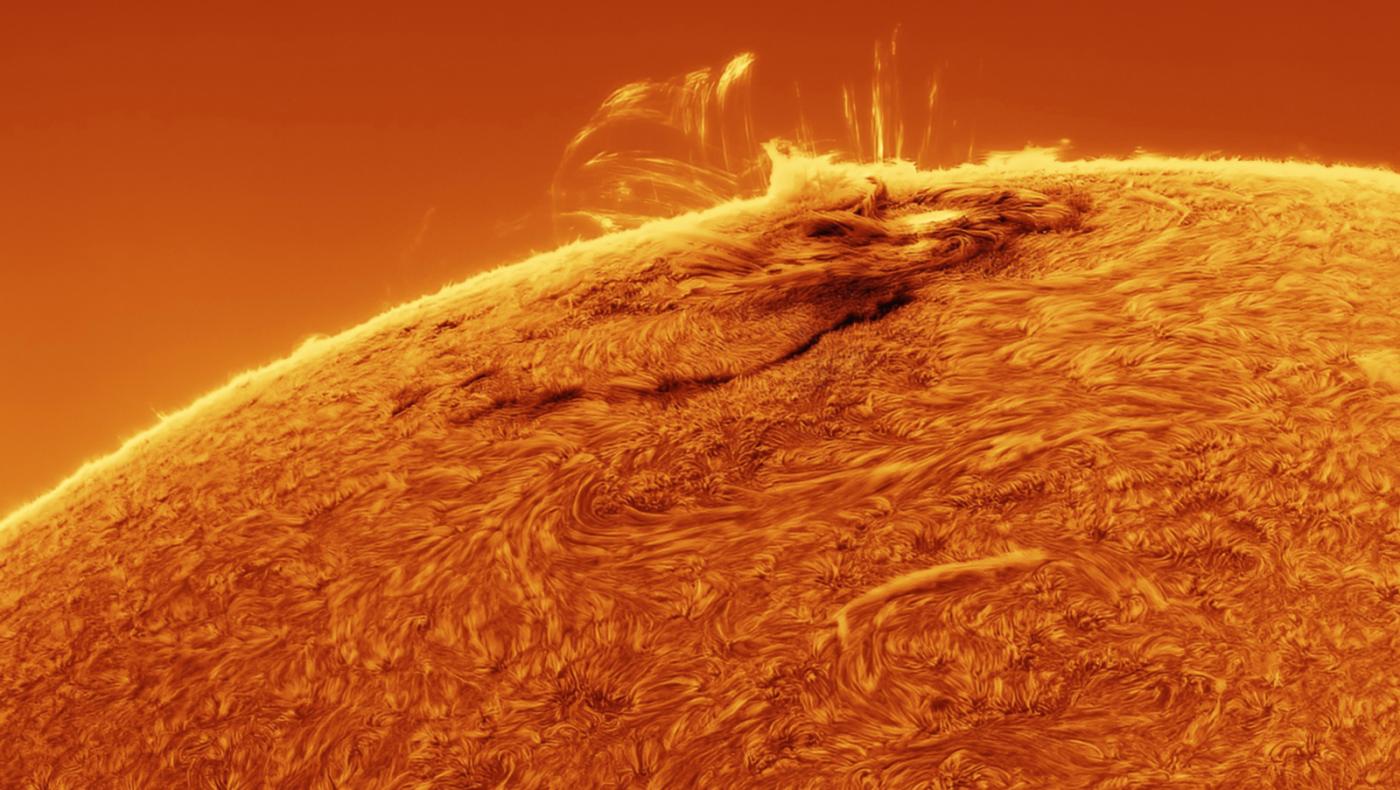
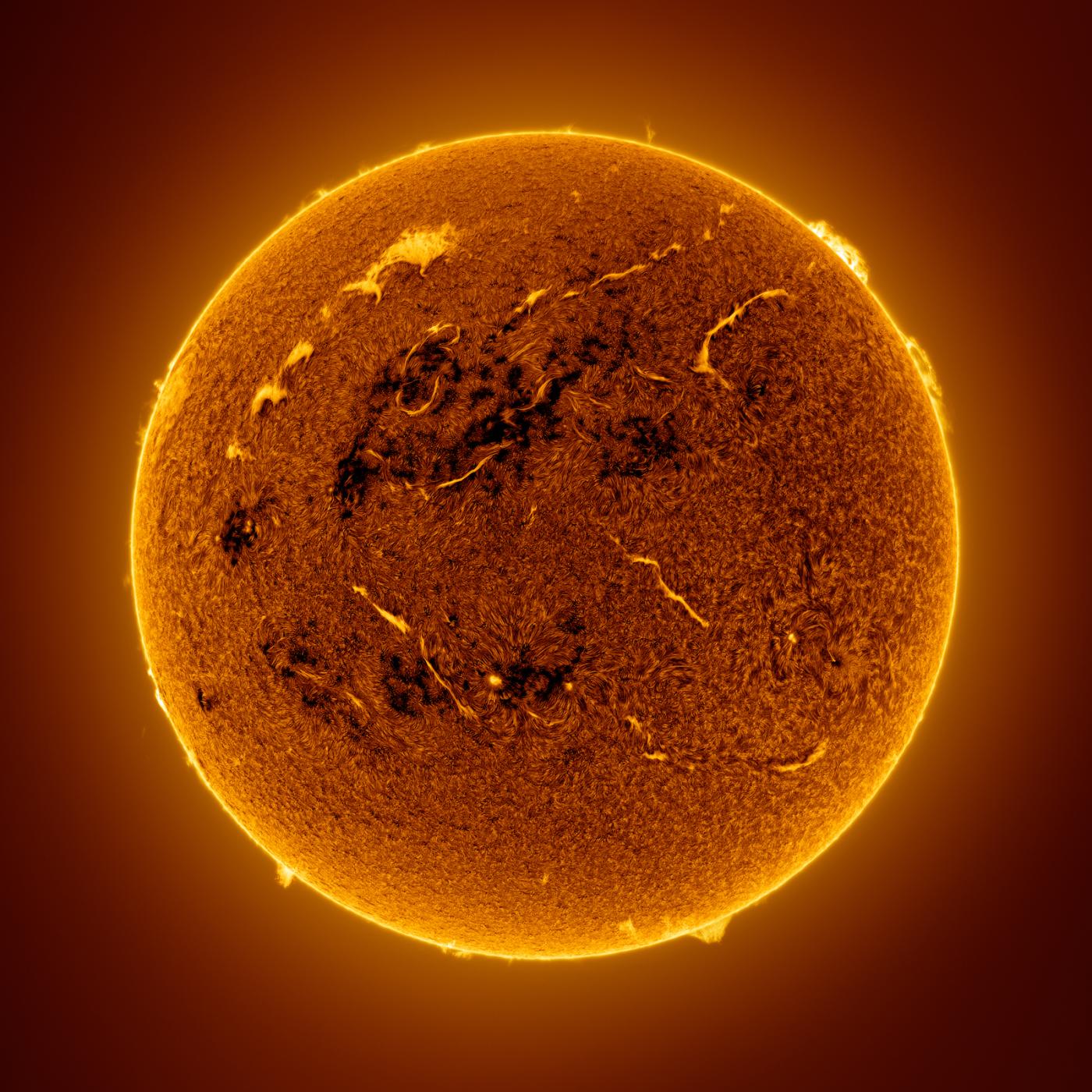
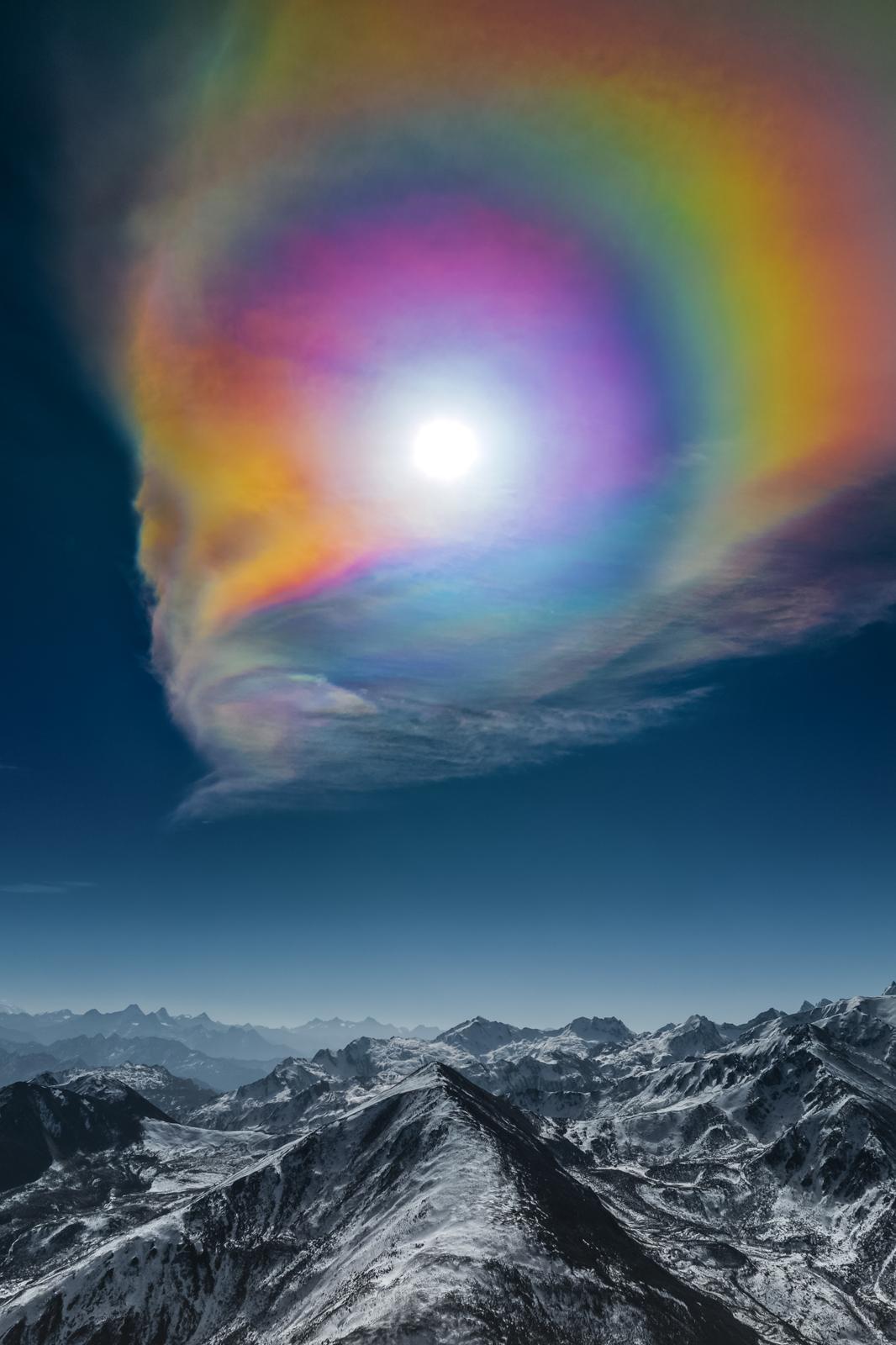
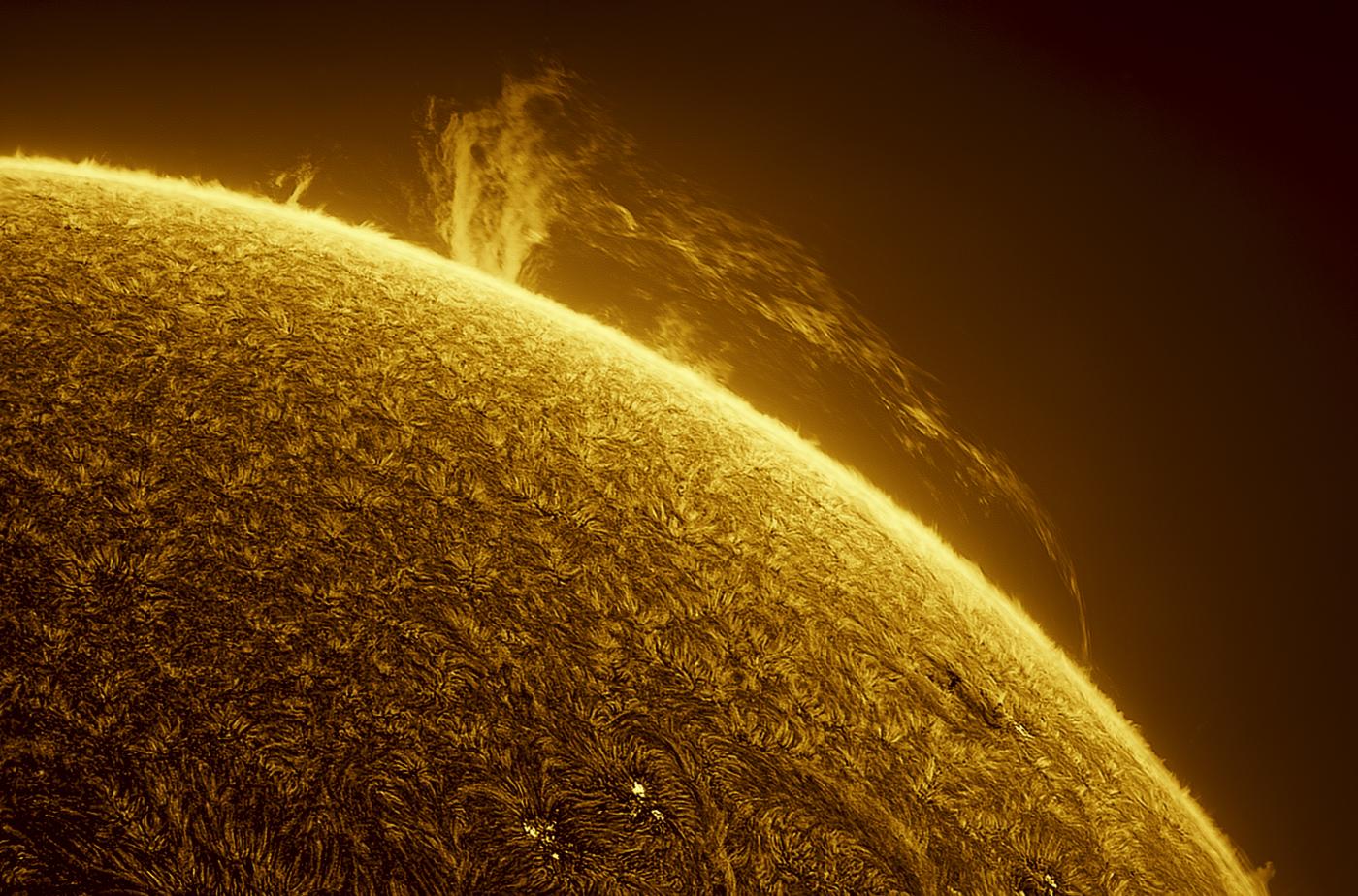
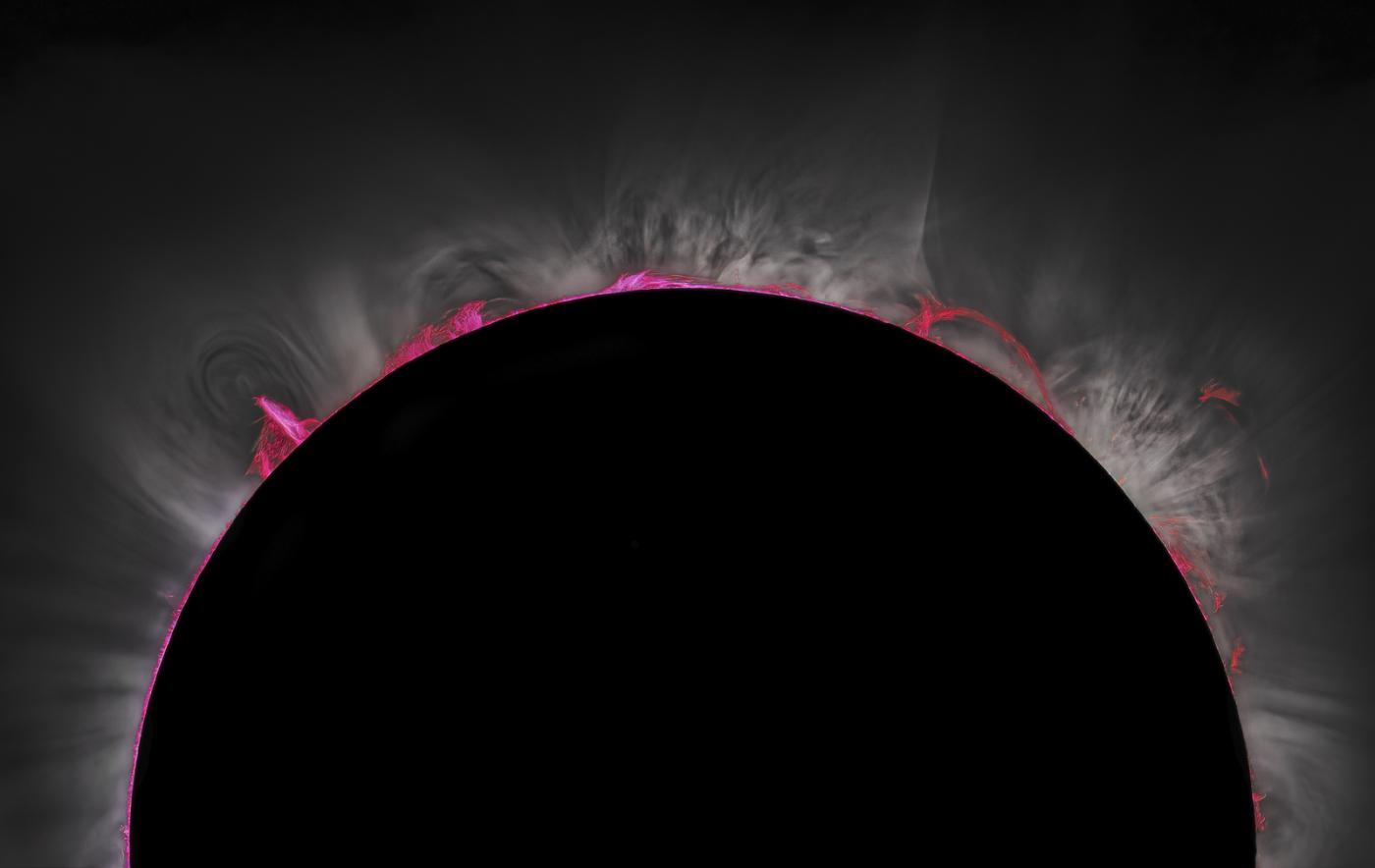
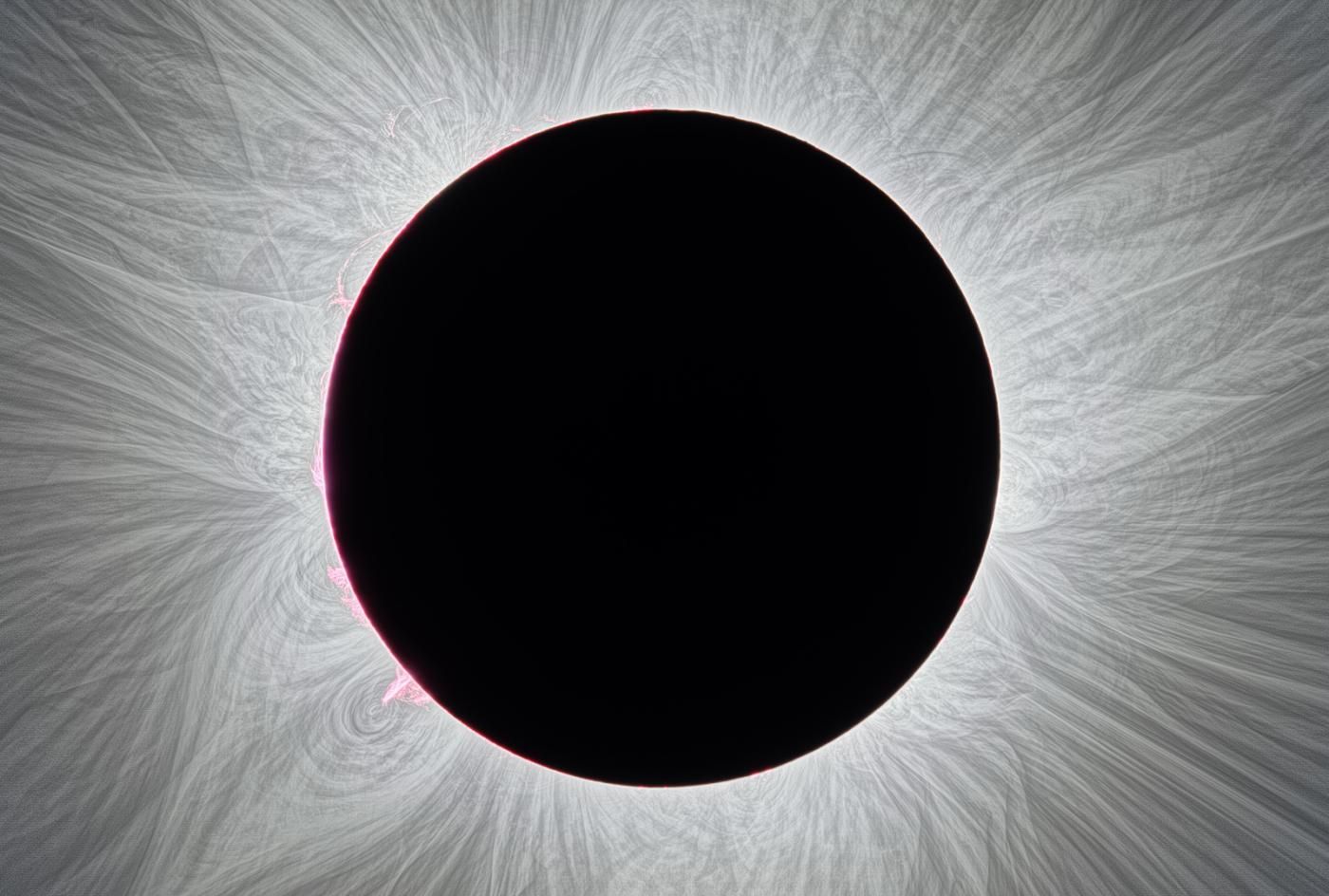
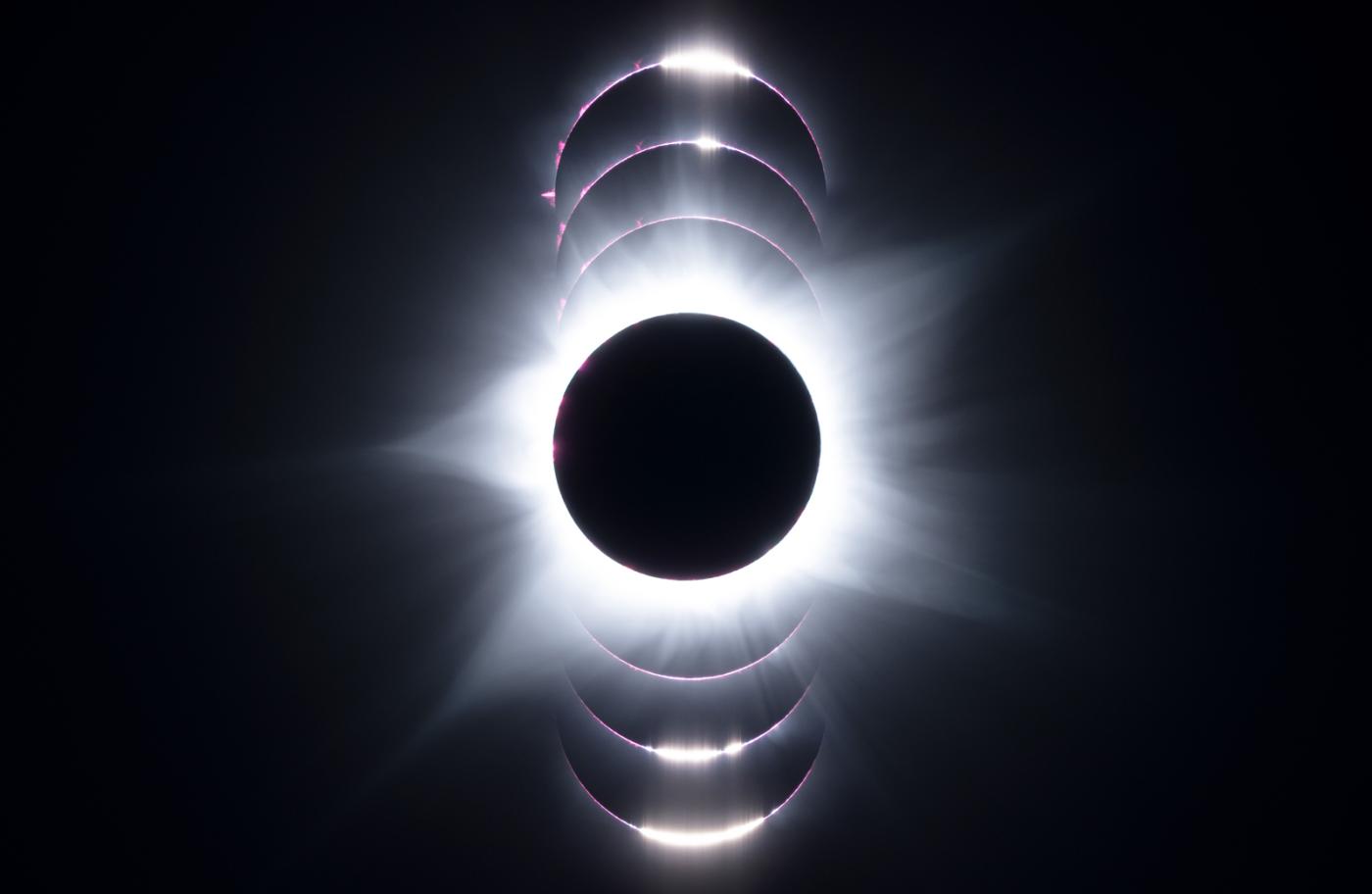
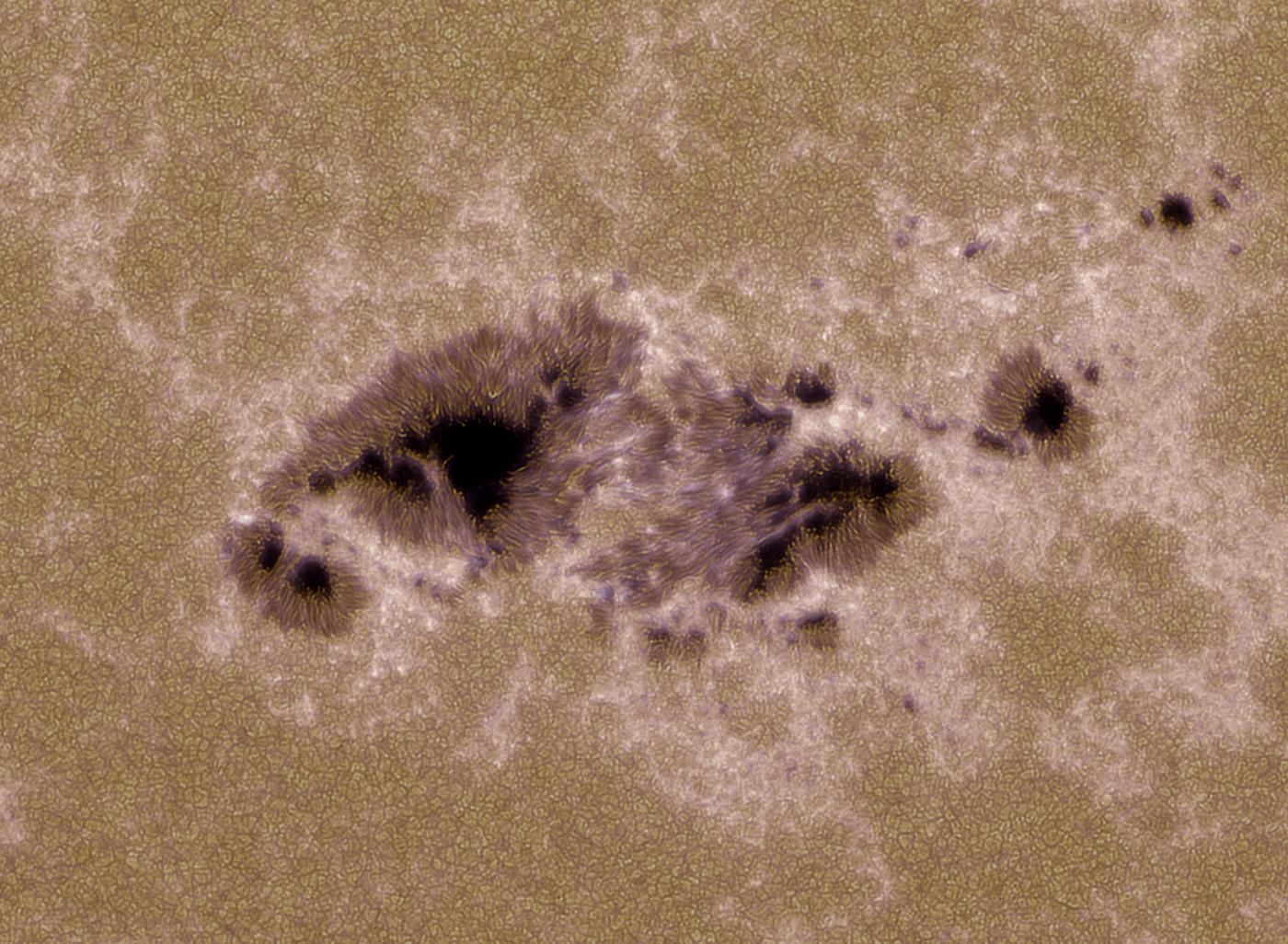
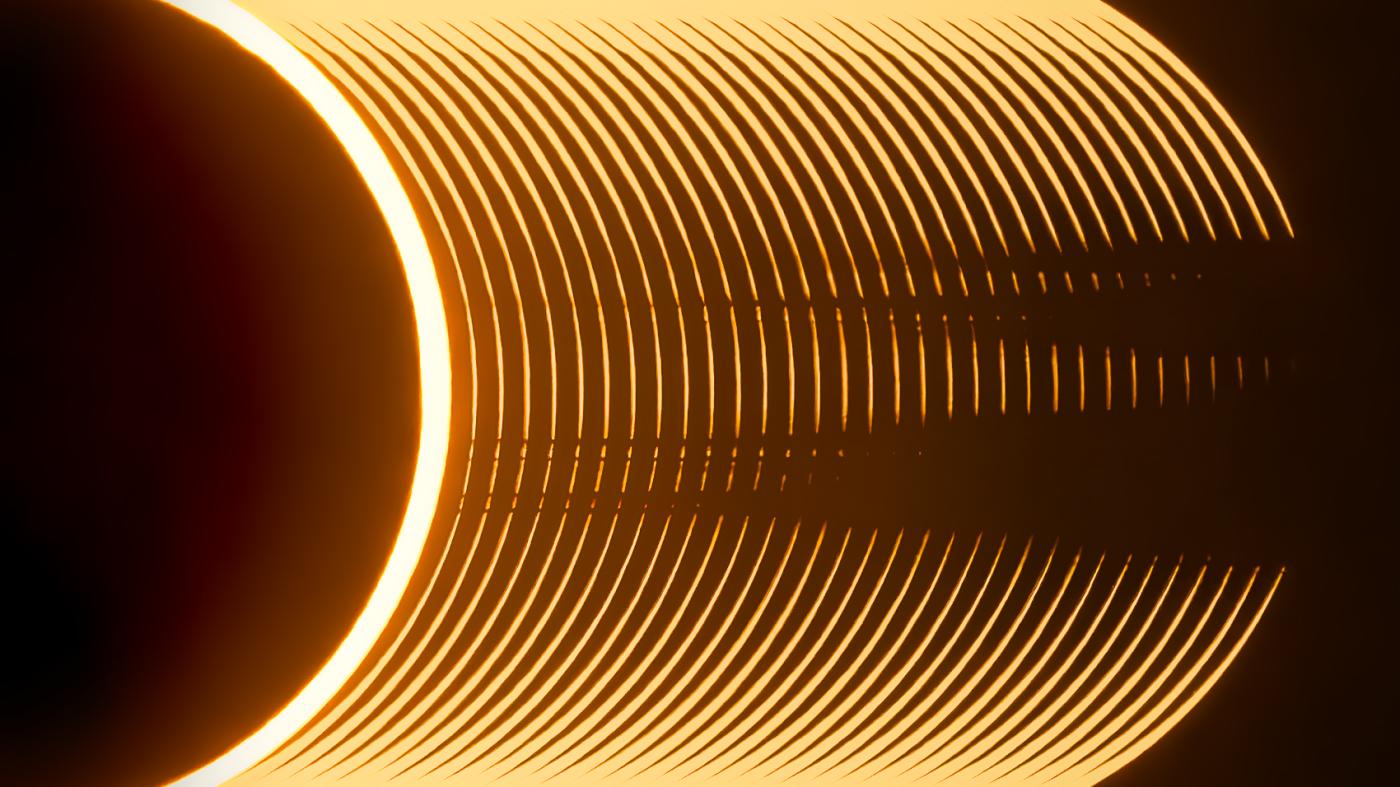
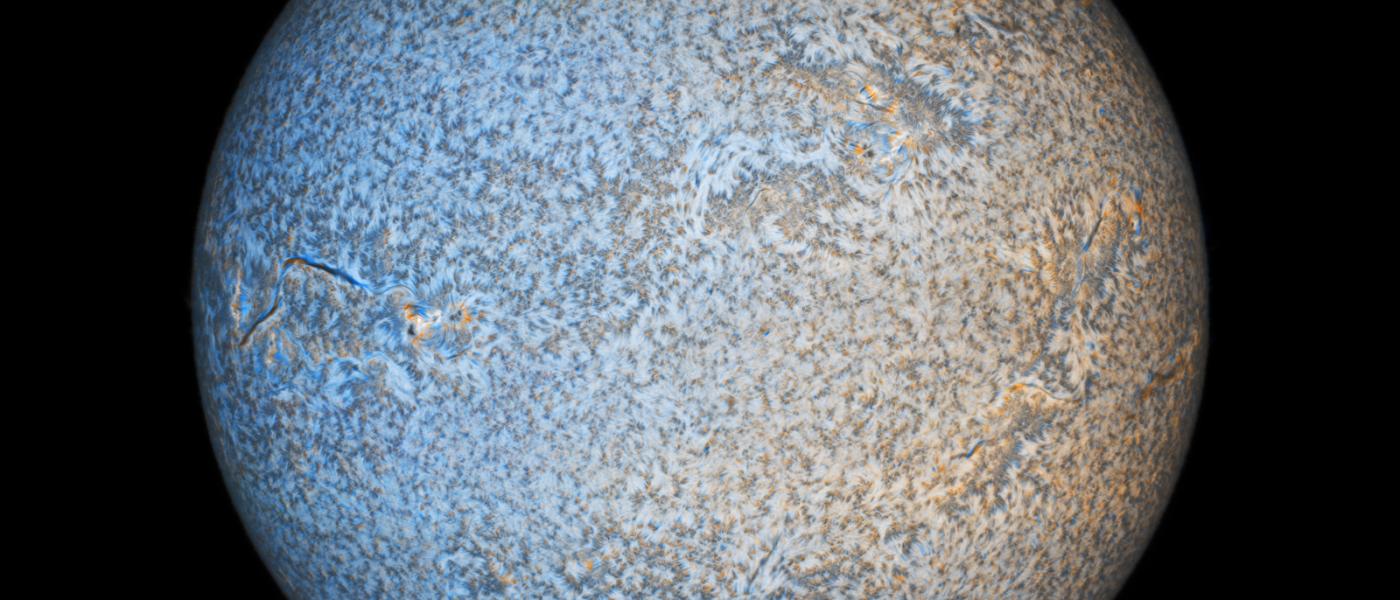
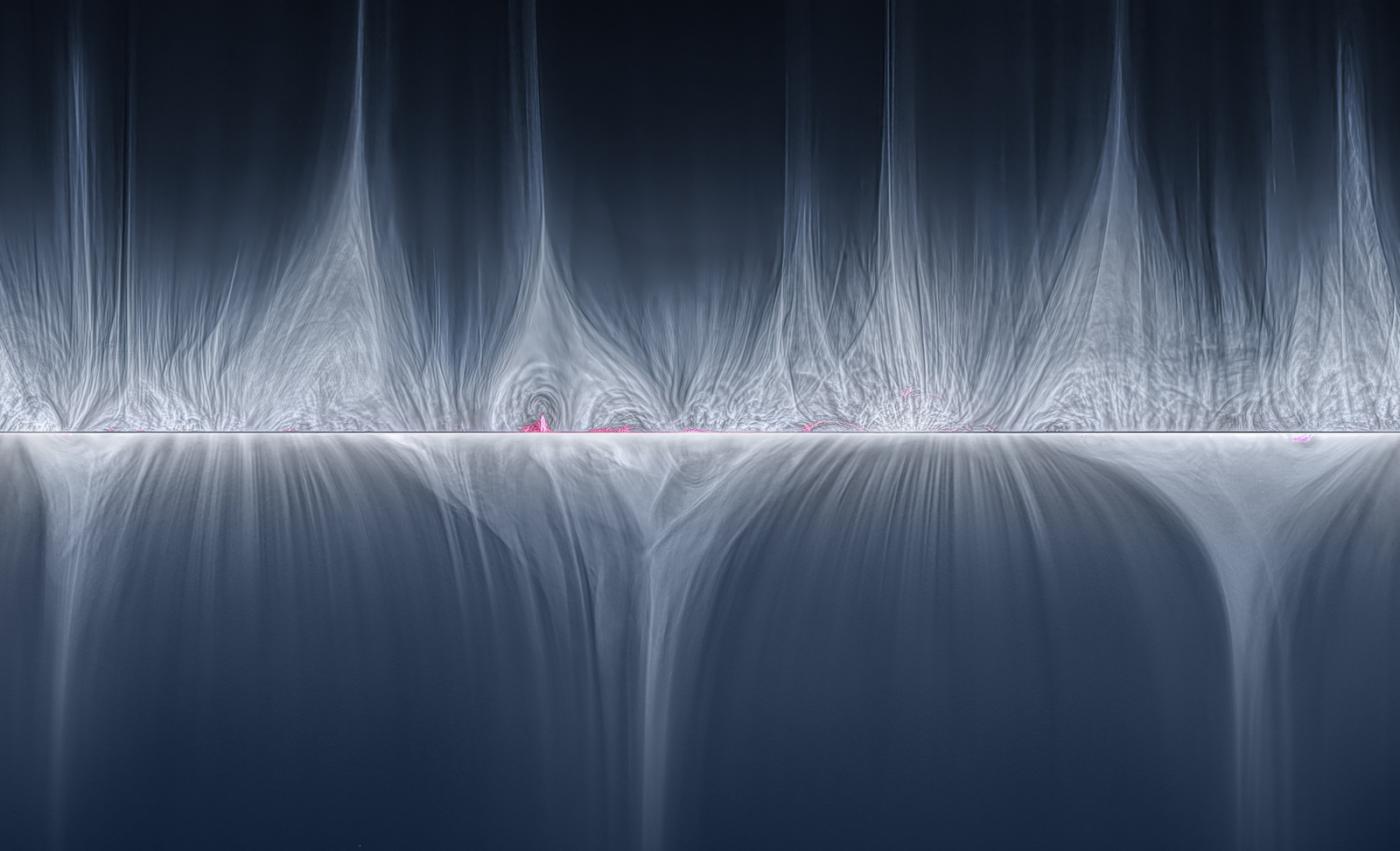
See the full shortlist
Never miss a shooting star
Sign up to our space newsletter for exclusive astronomy news, guides and events from Royal Museums Greenwich.
Explore more categories
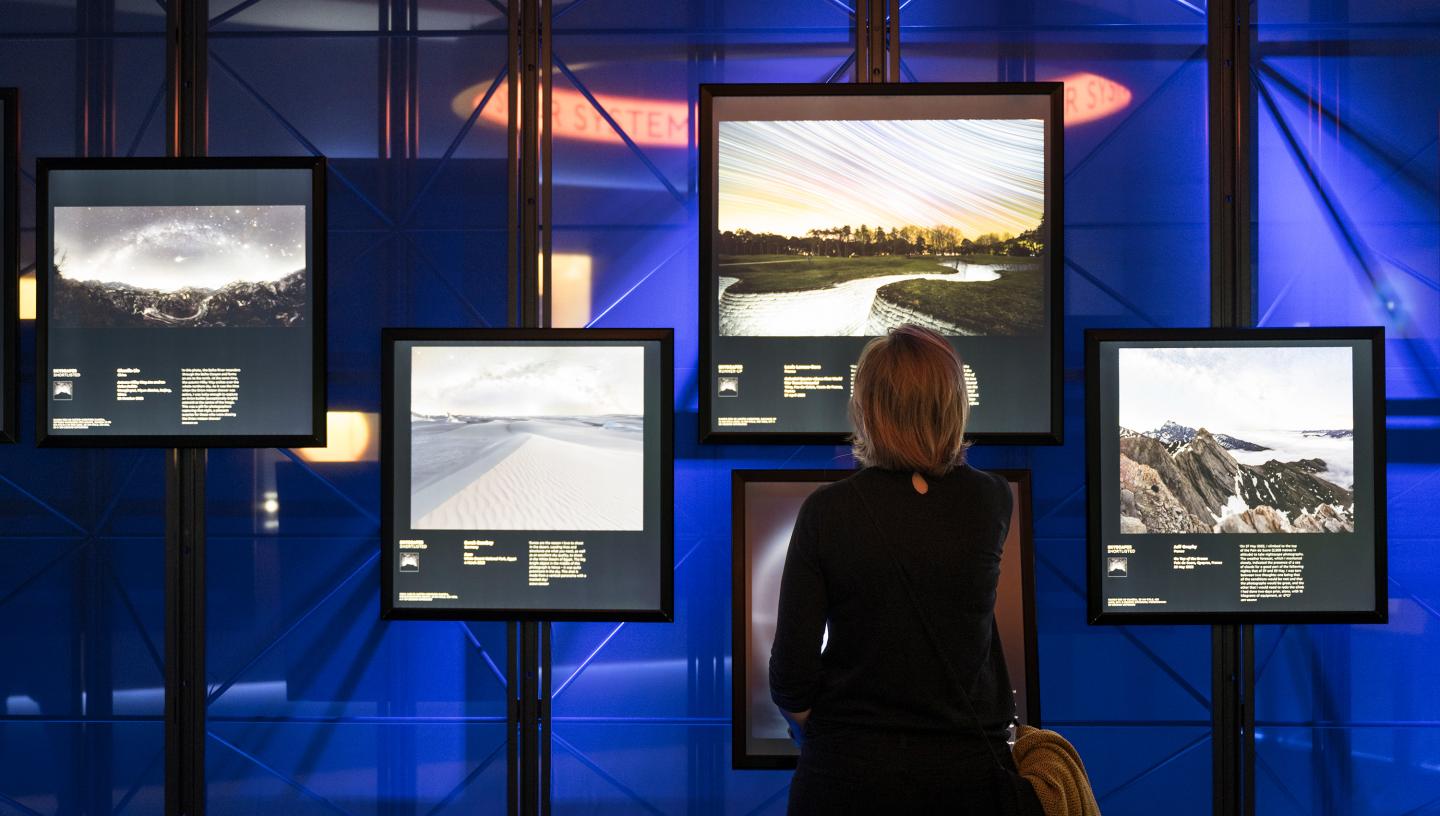
Visit the exhibition
Our partners


